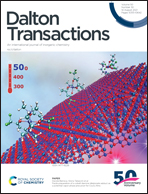Cobalt–iron zeolitic imidazolate frameworks (ZIFs) as microfibers for the effective detection of hydroquinone†
Abstract
The monitoring of pollutants has received significant attention from researchers in recent years owing to their hazardous nature and their toxic effect on the environment. Among them, water pollution plays a major role and results in dominant diseases along with life-long health problems. Hydroquinone (HQ), the major metabolite of benzene, is an industrially used organic compound which causes symptoms associated with nervous related disorders, such as faintness, therefore the research community has been inspired to detect sources of this carcinogenic agent. In this work, cobalt–iron based zeolitic imidazolate framework microfibers (CoFe-ZIF-MFs) were used for the selective detection of HQ. Micro-structured CoFe-ZIF fibers were fabricated using the wet chemical and electrospinning method. The electrochemical response of the prepared composite revealed an excellent redox behavior towards HQ and does not suffer from interference resulting from other analytes. The proposed sensor exhibited a wide linear range of 1 μM–1 mM with a detection limit of 230 nM, resulting in a good stability of up to 88%, even after 250 cycles. The designed sensor showed an exquisite performance for real sample analysis which indicates the device mechanism is reliable for use in environmental monitoring, public health care, industrialized areas and waste water management systems.



 Please wait while we load your content...
Please wait while we load your content...